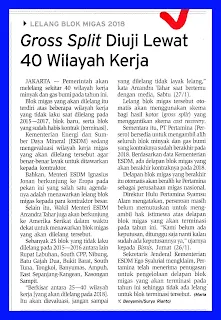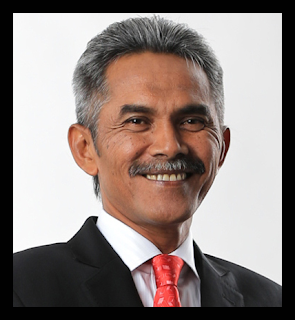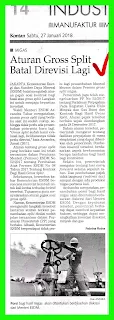
The government said the reduction of Non-Tax State Revenue (PNBP) up to US $ 4.3 million will only cut the price of gas to industry around US $ 0.3-0.7 per million british/mmbtu. Therefore, the reduction of industrial gas prices will still be reviewed by the Coordinating Ministry for Economic Affairs.
Deputy Minister of Energy and Mineral Resources (ESDM) Arcandra Tahar said the discussion to reduce industrial gas prices continues to be done by the government. The reason, from seven industries that are entitled to get low gas prices, until now only realized for three types of industries namely steel industry, fertilizer industry, and petrochemical industry.
Presidential Regulation No. 40 of 2016 which became the legal basis for the revision of gas prices to industry since last May. With this beleid, the price of gas to certain industries above US $ 6 per mmbtu could potentially be lowered. Industries that can enjoy this price are fertilizer industry, petrochemical, oleochemical, steel, ceramic, glass, and rubber gloves.
This industry is considered worthy of incentives because of its weak competitiveness and absorb a lot of manpower. Referring to the Presidential Decree, the decline in gas prices is one of which is pursued through the reduction of PNBP taken by the government from gas sales by oil and gas companies.
"But (PNBP) has been reduced, the effect is very small at around US $ 0.3-0.7 per mmbtu and it is not below US $ 6 per mmbtu of gas price," he said.
Though PNBP is estimated to be cut to US $ 4.3 million if the move is realized. That's why the government then wants to see how much benefit from the PNBP deductions, from the upstream, the government is also difficult to reduce the gas price because the contract has been signed and capital spending has been issued.
"This is again seen, if the state is reduced by US $ 4.3 million, we will get how much. Finance Minister Sri Mulyani considers it, "said Arcandra.
Arcandra added that the Ministry of Industry has recommended 80 companies to obtain gas at low prices. The total volume of gas for the entire company is only about 21 million cubic feet per day / mmscfd. Currently, 56 companies are being processed. The government will still discuss again the issue of the decline in industrial gas prices.
"Due to the downturn of its PNBP, it is being evaluated from the Coordinating Ministry of Economic Affairs. We'll wait, "he said.
In addition, it is also still awaiting a decision from Finance Minister Sri Mulyani. In Presidential Regulation 40/2016 mentioned, if the current price of natural gas does not meet the industrial economy, then the government will set a certain price of natural gas.
Later, the price of this particular gas is determined by looking at the availability of natural gas for industry and economic growth that can be achieved with the utilization of gas in providing added value. Previously, the government has issued Regulation of the Minister of Energy and Mineral Resources (ESDM) No. 40 of 2016 on Gas Prices For Certain Industries.
In this regulation, there are eight industries that get special gas prices. However, the price of gas for PT Kaltim Parna Industri, PT Kaltim Methanol Industri, and PT Pupuk Kalimantan Timur are still in accordance with the current price formula.
This is because gas prices for these three industries are still low at around US $ 2,855,865 per mmbtu. As for the other four industries, the gas price formula is changed. For PT Pupuk Kujang Cikampek, gas price from Pertamina EP decreased from US $ 6.62 per mmbtu to US $ 6 per mmbtu and from Pertamina Hulu Energi Offshore North West Java (PHE ONWJ) decreased to US $
5.73 per mmbtu.
The gas price for PT Pupuk Sriwidjaja Palembang from Pertamina EP decreased from US $ 6.54-6,73 to US $ 6 per mmbtu and JOB PHE-Talisman from US $ 6.56 to US $ 6.48 per mmbtu. Furthermore, for PT Pupuk lskandar Muda, gas prices from JOB PHE North Sumatra B and North Sumatra Offshore fell from US $ 7.54 to US $ 6 per mmbtu.
Gas price for PT Petrokimia Gresik from Kangean Energy Limited fell from US $ 6.28 to US $ 6 per mmbtu. Finally, PT Krakatoa Steel's gas price from PT Pertamina EP fell from US $ 7.35 to US $ 6 per mmbtu.
IN INDONESIA
Pengurangan PNBP Sulit Tekan Harga Gas Industri
Pemerintah menyatakan pengurangan Penerimaan Negara Bukan Pajak (PNBP) hingga US$ 4,3 juta hanya akan memangkas harga gas ke industri sekitar US$ 0,3-0,7 per million britishthermal unit/mmbtu. Karenanya, pengurangan harga gas industri ini masih akan dikaji Kementerian Koordinator Bidang Perekonomian.
Wakil Menteri Energi dan Sumber Daya Mineral (ESDM) Arcandra Tahar mengatakan, pembahasan untuk menekan harga gas industri terus dilakukan pemerintah. Pasalnya, dari tujuh industri yang berhak memperoleh harga gas rendah, hingga kini hanya terealisasi untuk tiga jenis industri saja yakni industri baja, industri pupuk, dan industri petrokimia.
Peraturan Presiden Nomor 40 Tahun 2016 yang menjadi dasar hukum revisi harga gas ke industri sejak Mei lalu. Dengan beleid ini, harga gas ke industri tertentu di atas US$ 6 per mmbtu berpotensi diturunkan. Industri yang dapat menikmati harga ini adalah industri pupuk, petrokimia, oleochemical, baja, keramik, kaca, dan sarung tangan karet.
Industri ini dinilai layak mendapat insentif karena daya saingnya lemah dan menyerap banyak tenaga kerja. Mengacu Peraturan Presiden tersebut, penurunan harga gas salah satunya diupayakan melalui pengurangan PNBP yang diambil pemerintah dari penjualan gas oleh perusahaan migas.
“Tetapi (PNBP) sudah dikurangi, kecil sekali efeknya sekitar US$ 0,3-0,7 per mmbtu dan itu tidak di bawah US$ 6 per mmbtu harga gasnya,” kata dia.
Padahal PNBP diperkirakan akan terpotong hingga US$ 4,3 juta jika langkah tersebut direalisasikan. Karena itulah pemerintah kemudian ingin melihat seberapa besar manfaat yang diperoleh dari pemotongan PNBP Pasalnya, dari hulu pun, pemerintah juga sulit menekan harga gas karena kontrak sudah ditandatangani dan modal belanja sudah dikeluarkan.
“Ini lagi dilihat, kalau bagian negara berkurang US$ 4,3 juta, nanti kita dapat berapa. Menteri Keuangan Sri Mulyani mempertimbangkan itu,” kata Arcandra.
Arcandra menambahkan, Kementerian Perindustrian telah merekomendasikan 80 perusahaan untuk memperoleh gas dengan harga rendah. Total volume penguntukan gas seluruh perusahaan ini hanya sekitar 21 juta kaki kubik per hari/mmscfd. Saat ini, sebanyak 56 perusahaan sedang diproses. Pemerintah masih akan membahas lagi masalah penurunan harga gas industri.
“Karena turun PNBP-nya, sedang dievaluasi dari Kementerian Koordinator Perekonomian. Kita tunggu,” katanya.
Selain itu, pihaknya juga masih menunggu keputusan dari Menteri Keuangan Sri Mulyani. Dalam Peraturan Presiden 40/2016 disebutkan, jika harga gas bumi yang ada saat ini tidak memenuhi keekonomian industri, maka pemerintah akan menetapkan harga gas bumi tertentu.
Nantinya, harga gas bumi tertentu ini ditetapkan dengan melihat ketersediaan gas bumi untuk industri dan pertumbuhan ekonomi yang bisa dicapai dengan pemanfaatan gas dalam memberikan nilai tambah. Sebelumnya, pemerintah telah mengeluarkan Peraturan Menteri Energi dan Sumber Daya Mineral (ESDM) Nomor 40 Tahun 2016 tentang Harga Gas Untuk Industri Tertentu.
Dalam regulasi ini, terdapat delapan industri yang mendapatkan harga gas khusus. Namun, harga gas untuk PT Kaltim Parna Industri, PT Kaltim Methanol Industri, dan PT Pupuk Kalimantan Timur masih sesuai dengan formula harga yang berlaku saat ini.
Hal ini karena harga gas untuk ketiga industri ini masih rendah yakni sekitar US$ 2,855,865 per mmbtu. Sementara untuk empat industri lain, formula harga gasnya diubah. Untuk PT Pupuk Kujang Cikampek, harga gas dari Pertamina EP turun dari US$ 6,62 per mmbtu menjadi US$ 6 per mmbtu dan dari Pertamina Hulu Energi Offshore North West Java (PHE ONWJ) turun menjadi US$
5,73 per mmbtu.
Selanjutnya harga gas untuk PT Pupuk Sriwidjaja Palembang dari Pertamina EP turun dari US$ 6,54-6,73 menjadi US$ 6 per mmbtu dan JOB PHE-Talisman dari US$ 6,56 menjadi US$ 6,48 per mmbtu. Selanjutnya, untuk PT Pupuk lskandar Muda, harga gas dari JOB PHE North Sumatera B dan North Sumatera Offshore turun dari US$ 7,54 menjadi US$ 6 per mmbtu.
Harga gas untuk PT Petrokimia Gresik dari Kangean Energy Limited turun dari US$ 6,28 menjadi US$ 6 per mmbtu. Terakhir, harga gas PT Krakatau Steel dari PT Pertamina EP turun dari US$ 7,35 menjadi US$ 6 per mmbtu.
Investor Daily, Page-9, Friday, Jan 26, 2018





















